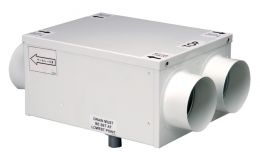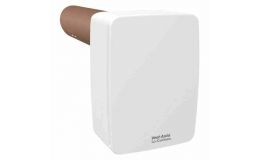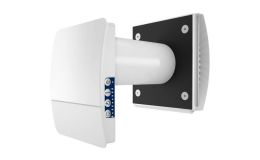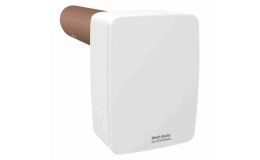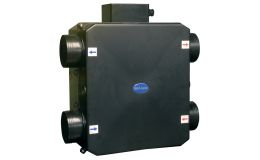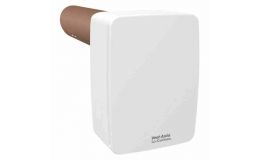Fastlec uses cookies to ensure that we give you the best experience on our website. If you continue we assume that you consent to receive all cookies on the Fastlec website. Read More.
Heat Recovery
What Does A Heat Recovery Unit Do?
Heat recovery is a means by which ventilation systems that bring cool fresh air into a building, using fans, can be augmented by the installation of a heat recovery unit which will recover the heat generated by occupancy and use of a building currently dumped into the environment. It is possible to recover a proportion of the heat contained in the extracted air and pass this into the incoming fresh air which will raise the temperature of the incoming air reducing the reliance on a boiler or other fuel-expensive heating system. The two air streams do not need to mix directly to allow the transfer of heat.
If you are considering installing a heat recovery system it is important to first analyse your needs to help in identifying the most cost-effective system for your application.
Request an Estimate or Full MVHR Design
Heat Recovery by Ventilation
Ventilation systems currently used to provide comfortable ventilation consist of ducts which supply the house with fresh, draft-free air which is also free of particulates and inhibits noise transmission from outside. All used, odorous and moist air is extracted from kitchens, bathrooms and WCs. and the incoming ‘supply’ air reduces the dependence on other forms of heat generation.
During summer months an underground heat exchanger can cool the air supply thereby providing a clean interior climate. A heat exchange system will combine comfort and well-being and will protect and add value to your home.
On a daily basis, an adult usually consumes about 15,000 litres of air per day. Ninety per cent of this air is usually consumed indoors. For this air to be classified as clean air it needs to be replaced every two hours. An effective ventilation system is necessary for a home to protect both the fabric of the building and the occupants against condensation mould growth and other airborne pollutants which can be present in most homes.
A heat recovery system uses the warm outgoing exhausted air to heat the cooler incoming air supply. Rather than being released through a window, the warm air will transfer most of its heat to the incoming air supply in a highly efficient heat recovery exchanger before being exhausted. The two air supplies never ‘mix’ as the heat radiates through the plates of the exchanger. Stale air, before being exhausted from the house can be contaminated with humidity, toxins and smells extracted from the kitchen, bathroom and toilet.
Outlet grilles in toilets and wet room areas, such as the bathroom, en-suite, utility and kitchen provide a constant, or demand-oriented, airflow volume to be extracted.
Fresh air is fed directly from outside into the ventilation system through a filter. The heat taken from the extracted air is used to warm the fresh filtered air in the exchanger and then flows through ducting. By undercutting doors and fitting transfer grilles fresh air circulation is ensured throughout the dwelling.
Benefits of a Heat Recovery System include:
- Saving energy by reducing heating costs
- Extracting airborne pollutants that can aggravate allergies and asthma
- Constantly refresh the internal atmosphere
- Removing condensation and humidity
- Supplying warmed, filtered air to living spaces
Heat recovery exchangers fitted directly in the ventilation units allow the use of heat recovery in all building types with mandatory ventilation.
With the spectre of ever-increasing energy prices heat recovery is becoming more popular in residential dwellings. Heat recovery exchangers can also be used even in air-conditioned buildings - where during the summer season it serves as "cold recovery" - supplied warm air is cooled by air-conditioned exhaust air.
The need to conserve heat and power is encouraging everyone to increase their levels of insulation and air tightness. This can lead to poor indoor air quality which will increase health problems for occupants and visitors alike and in the long term cause damaging effects to the fabric of a building.
Changes to modern construction methods and Building Regulations now demand a greater level of ‘air tightness’, meaning that ventilation is even more important today than in the past.
More readily available information regarding heat recovery methods has increased awareness of energy efficiency and indoor air quality and the subject of ventilation with heat recovery is attracting more and more followers, not only among builders but also among architects, designers and in general people who strive for a more healthy and low-energy lifestyle.
- In stock
- In stock
- In stock
- In stock
-
2 Days Delivery
- In stock
- In stock
- In stock
- Due Back in Stock 21st August 2024
- In stock
- In stock
- In stock

